Theodoxus fluviatilis (Linnaeus, 1758)
– fourth part – |
| |
| Here will be displayed various specimens from Dalmatia and southern Donau drainage basin. |
| Dalmatia, adriatic drainage basin, from north to south: |
 |
Zadar area, Zrmanja river. On rocks facing the foot of the Gazin Kuk, on the right bank, east of Ogari. 7,7-8mm. In this place, the water is rather saturated in calcium carbonate, forming small tuff barriers across the river and often coating the shells of the local fluviatilis with some limescale deposit. 
Original picture of the river, taken from the right bank, provided by R. Crnković (HR) – (CC BY-NC-SA). |
 |
| Same spot. 8,2-8,3-8,5-8,5mm. |
 |
Zadar area, Vrana lake.
Specimens collected on the southwestern shore, Drage territory, near the viewpoint from the pinewood. 7,1-8,1mm. Since the end of the XVIIIth century, the lake is connected to the sea via a channel in its southern extremity; as a result, the water is now more or less brackish, depending of the season. Notice the yellow columellar callosities. |
 |
| Vransko jezero: the shore near the viewpoint. Original picture provided by R. Crnković (HR) – (CC BY-NC-SA). |
 |
Šibenik-Knin Comitat, Krka river.
At the foot of the watermill, a little downstream the fall at Kovačić. 7-8mm. |
 |
The collecting spot in the upper Krka river, where the fluviatilis are living. Original picture provided by R. Crnković (HR).
– (CC BY-NC-SA) – |
 |
| Krka river. Specimens feeding on the organic film on roots or leaves of underwater plants. Original pictures provided by R. Crnković (HR) – (CC BY-NC-SA). |
 |
| Krka river. Speciens from Skradin, just upstream the entrance in Prokljan marine lake, Šibenik-Knin Comitat. 5,1-5,95mm. Notice how the repairs to the operculum of the larger specimen changed the shape of the apophysis. |
 |
Split area.
Jadro river, downstream the dam of the emergence. 7,7mm. |
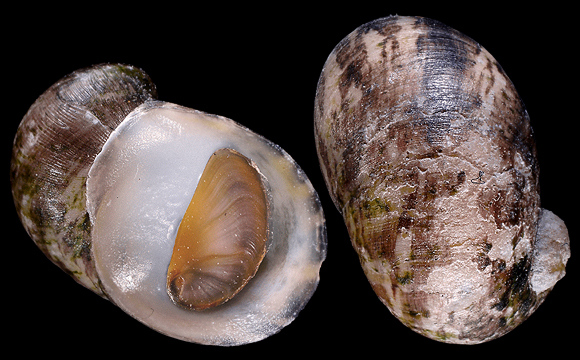 |
| Same spot. 8,7mm. |
 |
| Same spot. 7,4-8,8mm. |
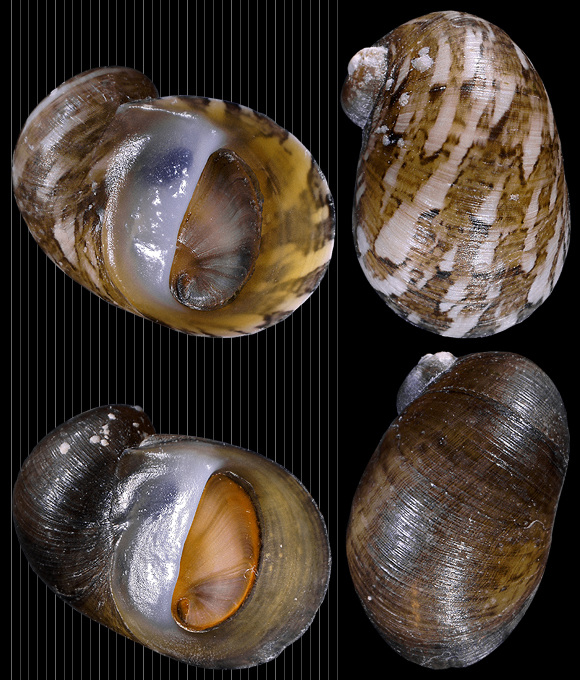 |
| Jadro river, near the outlet in Solin territory. 7,3-7,4mm. |
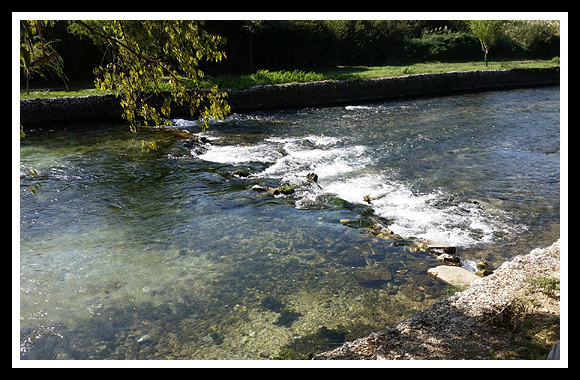 |
The Jadro at Solin.
Original picture provided by R. Crnković (HR).
– (CC BY-NC-SA) – |
 |
Split area, Žrnovnica river. Transition to some kind of “saulcyi”, near the emergence. Sizes: 6-6,6mm. Original image of the snails in situ provided by R. Crnković (HR).
– (CC BY-NC-SA) – |
 |
| Žrnovnica river. 7,5-7,8mm. |
 |
| Omiš area, Cetina river. Blato na Cetini, downstream the Pranjčevići dam. 7,9mm. |
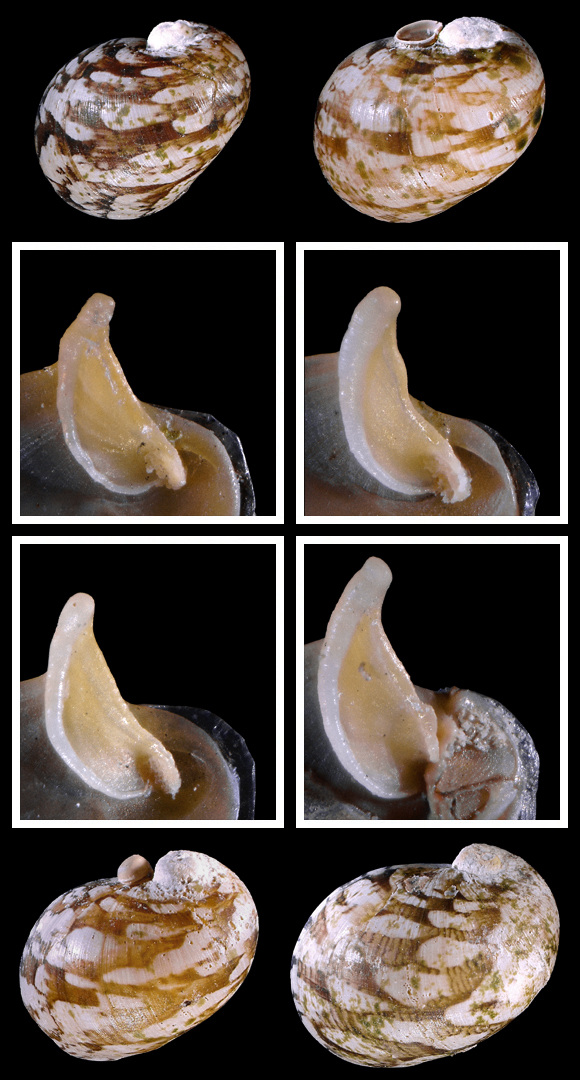 |
| The basal extension that prolongs the rib shield stops growing before the apophysis, hence its increasingly reduced appearance as the animal continues to progress towards its adult size. Lower Cetina, near Radmanove Mlinice. 5,8-6,1-6,2-7,1mm. Notice the egg cases placed on subadults. |
 |
| Dubrovnik-Neretva Comitat, Neretva river. On stones and pebbles at the foot of Lučki bridge, Metković. 8-9mm. |
 |
Same spot. Pale specimen, live collected.
The greenish shade is given by the diatoms. 8,55mm.
Original pictures provided by R. Crnković (HR).
– (CC BY-NC-SA) – |
 |
| Lower Neretva river. Opuzen, Franjo Tuđman Promenade. Colour and pattern variations. |
 |
| Same spot. 6,7-7mm. |
| Donau drainage basin and western Black Sea: |
 |
Black coloured specimens from Novi Sad, Vojvodina Province, northern Serbia. 8,8-10,2mm. In some aspects, such as the colour patterns of both shell and operculum, this population matches the description and figures of Theodoxus velox Anistratenko, 1999 that are presented in Sands & al., 2020; but the shape differs a little: the spire increasing is less marked than in the almost triangular specimens of velox displayed in the article. B. Žiljak legit (RS). Хвала Бранко! |
 |
| Other black coloured specimens, from Petrovaradin, Novi Sad territory. 9-10,5mm. B. Žiljak legit (RS). |
 |
Jet black coloured specimens, with some relief and coating, from Akbunar rivulet, in the botanical garden of Balčik, Oblast Dobrich, NE. Bulgaria. 6,2-6,4mm.
V. Gashtarov legit (BG). Благодаря Виктор! |
 |
This dark population has quite small shells, like the one that lives in the cold spring at Lamiña Cave, Camou-Cihigue. Original pictures provided by V. Gashtarov (BG).
– (CC BY-NC-SA) – |
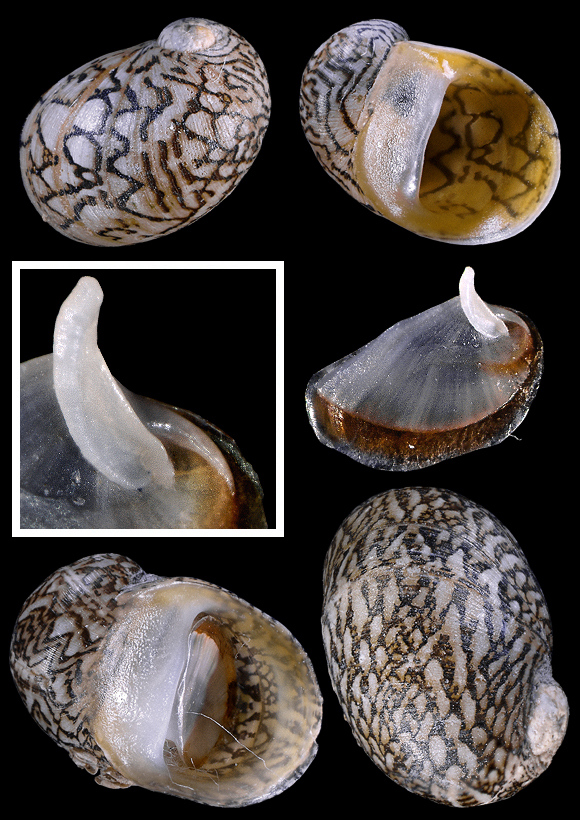 |
| Durankulak coastal lagoon, Obshtina Shabla, northeastern border of Oblast Dobrich. 7,5-9mm. V. Gashtarov legit (BG). |


























